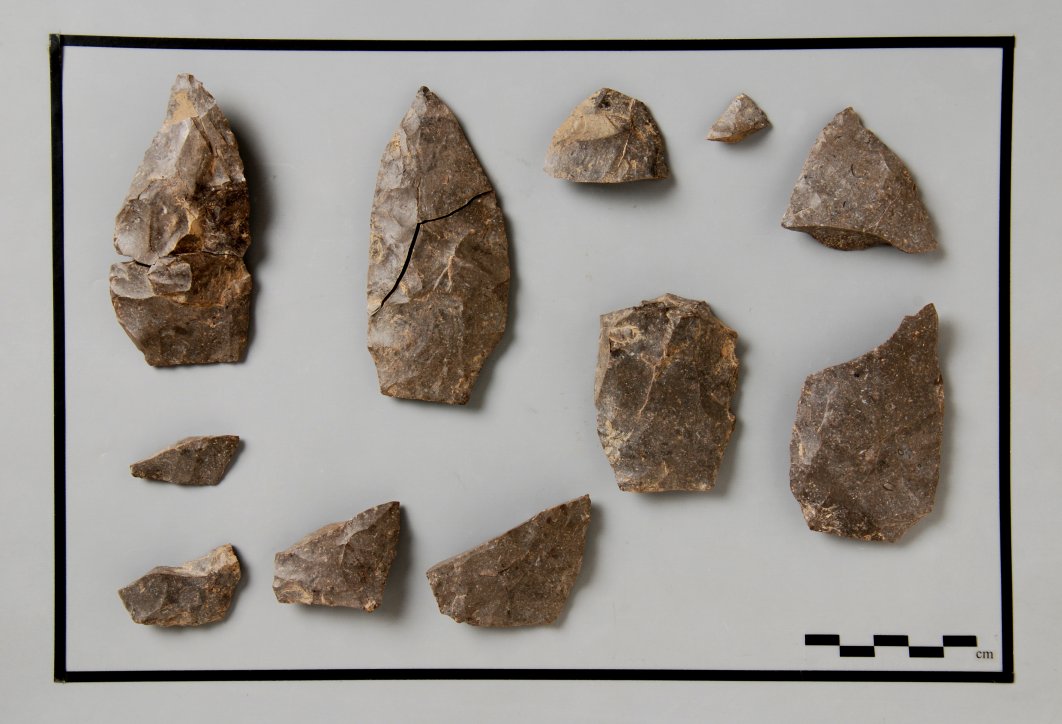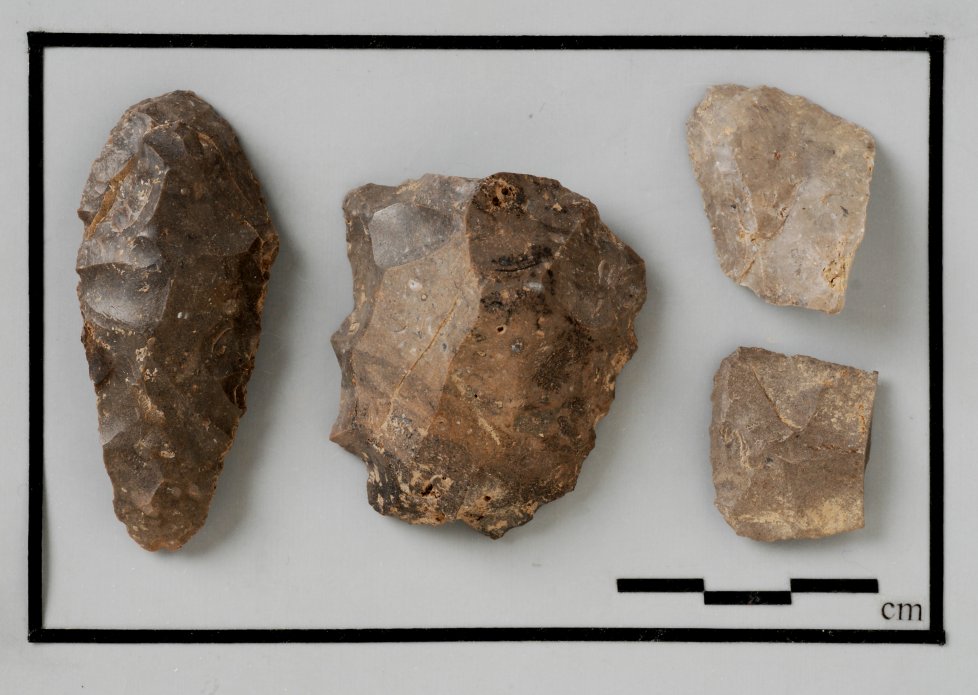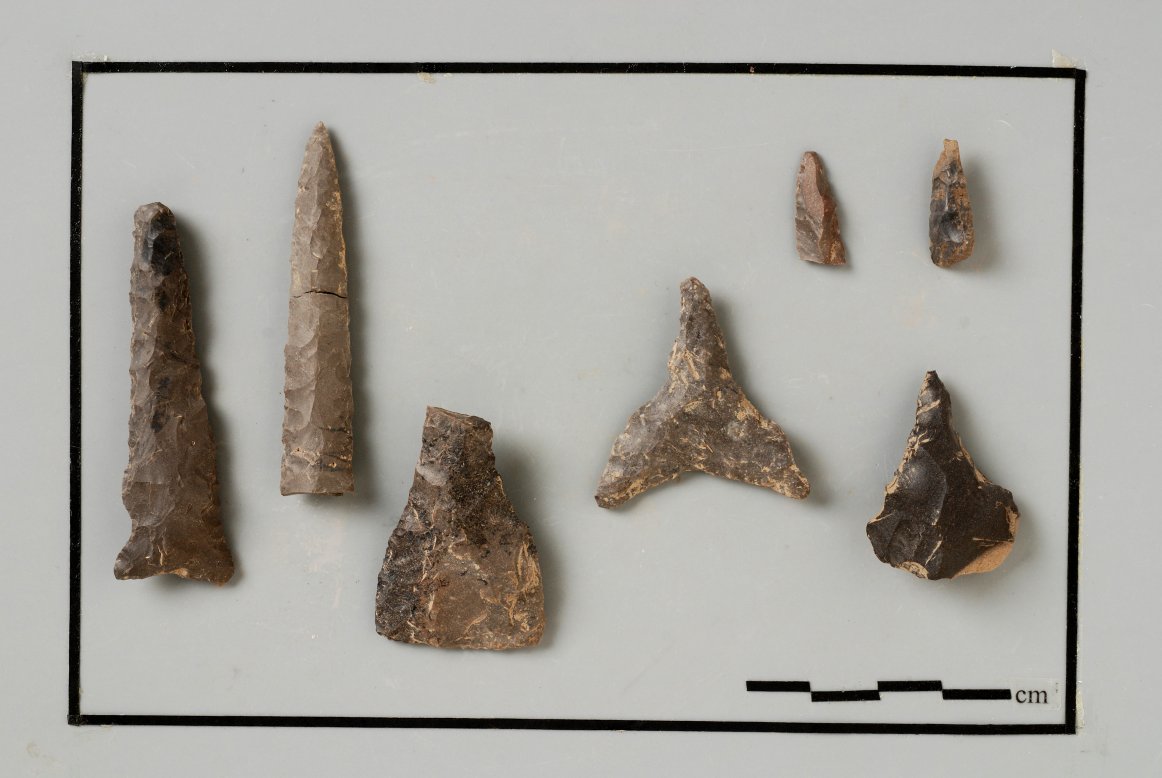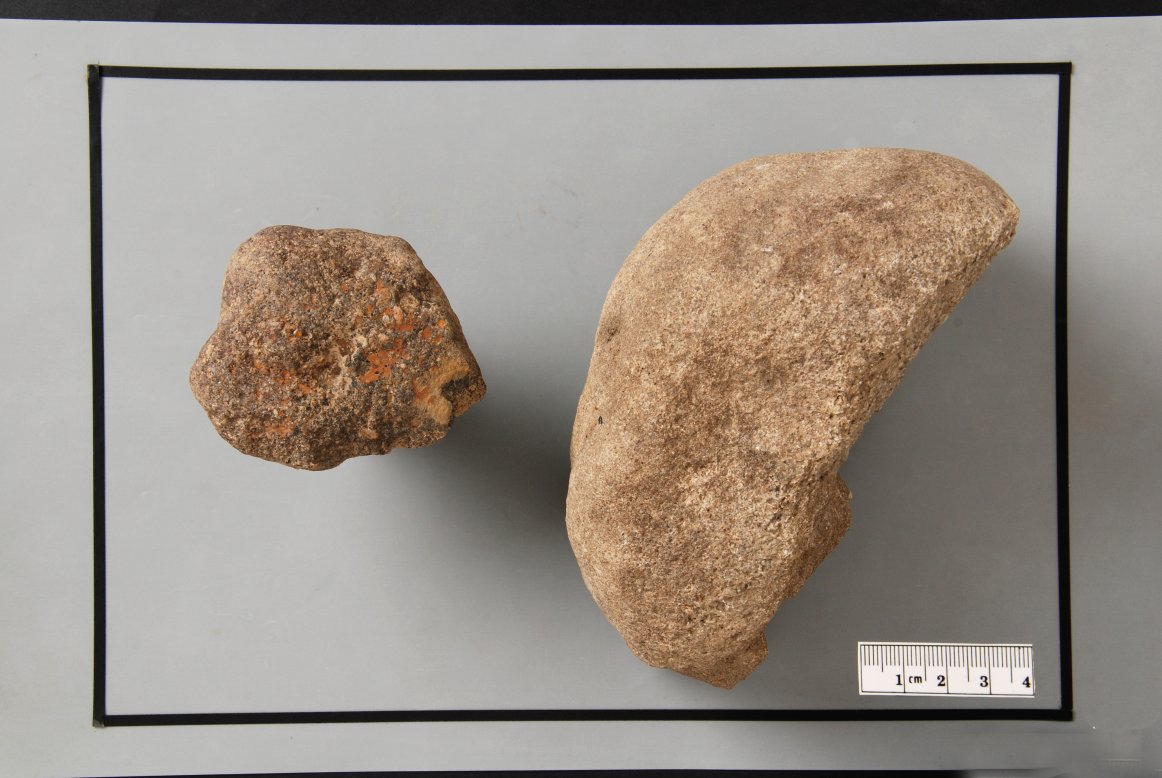Archaeologists identified and analyzed 30,000 pieces of material culture from feature and non-feature contexts associated with the Canadarago Lake I site. These included chipped stone (projectile points, bifaces, unifaces, cores, drills, scrapers, flakes, utilized flakes, chunk/shatter, and utilized chunk/shatter), rough and ground stone (hammerstones, pitted stones, ground stone flakes), and fire-cracked rock (FCR). A “Herkimer Diamond” was also recovered. The crystal was located in the Late Woodland horizon (A1) and appears to have been partially drilled before being discarded.
For all temporal components, lithic debitage and stone tools were the most abundant material culture type. The Late Woodland component produced the highest frequency of lithics and also a variety of types, including 6 pottery vessels (3 Jack’s Reef Corded, 1 Owasco Corded Horizontal, 1 Owasco Corded Oblique, 1 cord-impressed non-diagnostic), 15 Levanna points, 1 Madison point, 1 indeterminate point fragment, 2 point tips, 66 bifacial tools, 1 unifacial tool, 7 retouched pieces, 2 drills, 13,280 debitage/core, 2 pitted stones, 1 ground stone flake, 337 FCR, and 4 pipe bowl fragments. Most projectile points in the A1 horizon were Late Woodland Madison and Levanna points, but a Late Archaic Lamoka and Vestal point and two Early Woodland Meadowood points were also present. Similarly, a Levanna point was recovered from the A2 horizon and an additional seven were from excavation levels that crossed the A1 and A2 horizons. A Jack’s Reef Pentagonal point was also in a level that crossed the A1 and 2 horizons.
The Early Woodland component contained the next highest frequency of chipped stone : 1 Meadowood point, 1 unclassified corner-notched point, 31 bifacial tools, 3 retouched pieces, 2 drills, 7,001 debitage/core, 1 graver on a biface, and 146 FCR. As mentioned above, two Early Woodland Meadowood points were also recovered from the A1 horizon.
The Late Archaic component contained the third highest frequency of chipped stone. The diversity of types is smaller: 3 Lamoka points, 2 Susquehanna Broad points, 1 Levanna point, 1 Genesee point, 2 bifacial tools, 1 unifacial tool, 4 retouched pieces, 1,567 debitage/core, and 59 FCR; no drills were present. The A1 horizon contained a Late Archaic Lamoka and a Vestal point.
The smallest chipped stone assemblage is from the Transitional component where only 1 Orient Fishtail point, 1 Susquehanna Broad point, 3 bifacial tools, 4 retouched pieces, 569 debitage/core, 73 FCR are represented in the A2 assemblage. However, Transitional period projectile points were recovered from excavation levels that crossed the A1 and A2 horizons (two Susquehanna Broad) and that crossed the A1, A2, and B1 horizons (one Susquehanna Broad). Finally, two unusually large stone tools (a biface fragment and a point base) were recovered from the site.
Rough stone tools recovered from the Canadarago Lake I site (n=9) include pitted stones, a hammerstone, and ground stone flakes. All the rough stone tools that can be temporally placed are associated with the Late Woodland component. These include two pitted stones and a ground stone flake. Six rough stone tools could not be associated with a period of site use. A ground stone flake (a by-product of early ground/rough stone manufacture) was recovered from a unit associated with the Early Woodland period of site use. Another ground stone flake is associated with the A2 horizon, but it is from a unit for which no temporal component could be associated.
Archaeologists recovered 919 pieces (67,268 g) of FCR from the Canadarago Lake I site. Over one-third of the FCR by count (36.7%) and almost one-third by weight (30.6%) is associated with the Late Woodland period of site use. Of the FCR from Late Woodland features, most is from two features. FCR from Feature 11, a hearth, accounts for 64% of the Late Woodland feature FCR by count and 15% by weight; Feature 10, also a hearth, accounts for 11% by count and 64% by weight. Late Woodland Features 14, a basin-shaped pit, and 15, a hearth, also contained a small amount of FCR. The second highest percentage by count (16%) and weight (21%) for a dated component is associated with the Early Woodland period of site use. FCR associated with the Transitional period of site use accounts for approximately 8% by count and 10% weight. The Late Archaic component comprises 6% of the total assemblage by count and 9% by weight. Another 33% (by count; 29% by weight) was from contexts that could not be assigned to a temporal affiliation (from excavation levels that crossed A horizons), fill or disturbed levels, or A2 horizons from units that could not be assigned to a temporal component. FCR was recovered from both feature and non-feature contexts from both the Late Archaic and the Late Woodland components. Most FCR from the Late Archaic and Late Woodland components was recovered from non-feature contexts (by count and weight).

Canadarago Lake I bifaces.

Canadarago Lake I scrapers.

Canadarago Lake I drills.

Pitted stones from the Late Woodland component Canadarago Lake I site.